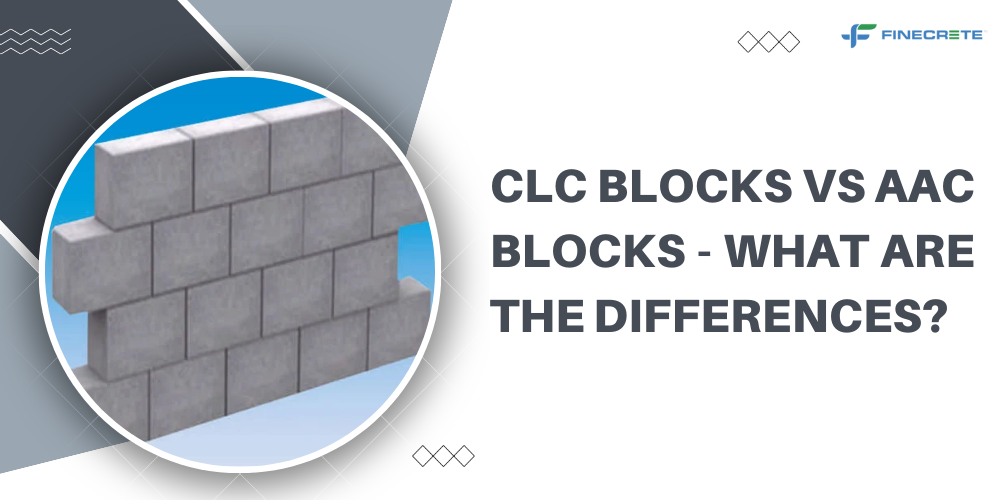When it comes to building materials, there are many options available in the market. Two such popular options are CLC blocks and AAC blocks. While both are used for constructing walls, there are significant differences between the two. Find out about CLC blocks and AAC blocks and the differences between the two.
What are CLC Blocks?
CLC stands for Cellular Lightweight Concrete. CLC blocks are made by mixing cement, fly ash, water, and foam in a specific proportion. The foam acts as a foaming agent and creates tiny air bubbles in the mixture, making it lightweight. The blocks are then cut into various sizes and shapes and can be used for construction purposes.
What are AAC Blocks?
AAC stands for Autoclaved Aerated Concrete. AAC Block Manufacturers in Delhi make AAC blocks by mixing cement, lime, sand, water, and an aerating agent. The mixture is then poured into a mold and heated in an autoclave to high temperatures, which causes the aerating agent to release gas and create tiny air pockets. This process makes the blocks lightweight and strong.
Top Differences between CLC Blocks and AAC Blocks
There are differences in:
- Manufacturing process:
The manufacturing process for CLC blocks is simple and does not require high temperatures or pressure. In contrast, the manufacturing process for AAC blocks requires high temperatures and pressure in an autoclave. This makes the manufacturing process for AAC blocks more expensive than CLC blocks.
- Density:
CLC blocks have a lower density than AAC blocks, making them lighter. The density of CLC blocks ranges from 600-1000 kg/m3, while the density of AAC blocks ranges from 500-700 kg/m3. This means that CLC blocks can be easily transported and installed, while AAC blocks require more effort and machinery.
- Strength:
AAC blocks are stronger than CLC blocks due to their higher density. The compressive strength of AAC blocks ranges from 3-4 N/mm2, while the compressive strength of CLC blocks ranges from 2.5-3 N/mm2. This means that AAC blocks can withstand more weight and pressure than CLC blocks.
- Thermal insulation:
Both CLC blocks and AAC blocks have good thermal insulation properties. However, AAC blocks have better thermal insulation than CLC blocks due to their higher density. This means that AAC blocks can provide better insulation against heat and cold than CLC blocks.
- Fire resistance:
AAC blocks offered by top AAC block suppliers in Delhi are highly fire-resistant and can withstand high temperatures. In contrast, CLC blocks are not as fire-resistant as AAC blocks and can be damaged by high temperatures.
- Cost:
The cost of CLC blocks is generally lower than AAC blocks due to the simpler manufacturing process. However, the cost of transportation and installation can be higher for AAC blocks due to their higher density.
Conclusion
Both CLC blocks and AAC blocks have their advantages and disadvantages. While CLC blocks are cheaper and easier to install, AAC blocks are stronger and provide better insulation. The choice between the two depends on the specific requirements of the project, such as the load-bearing capacity, thermal insulation, and fire resistance needed. It is important to consider all these factors before making a decision on which type of block to use for a construction project.






